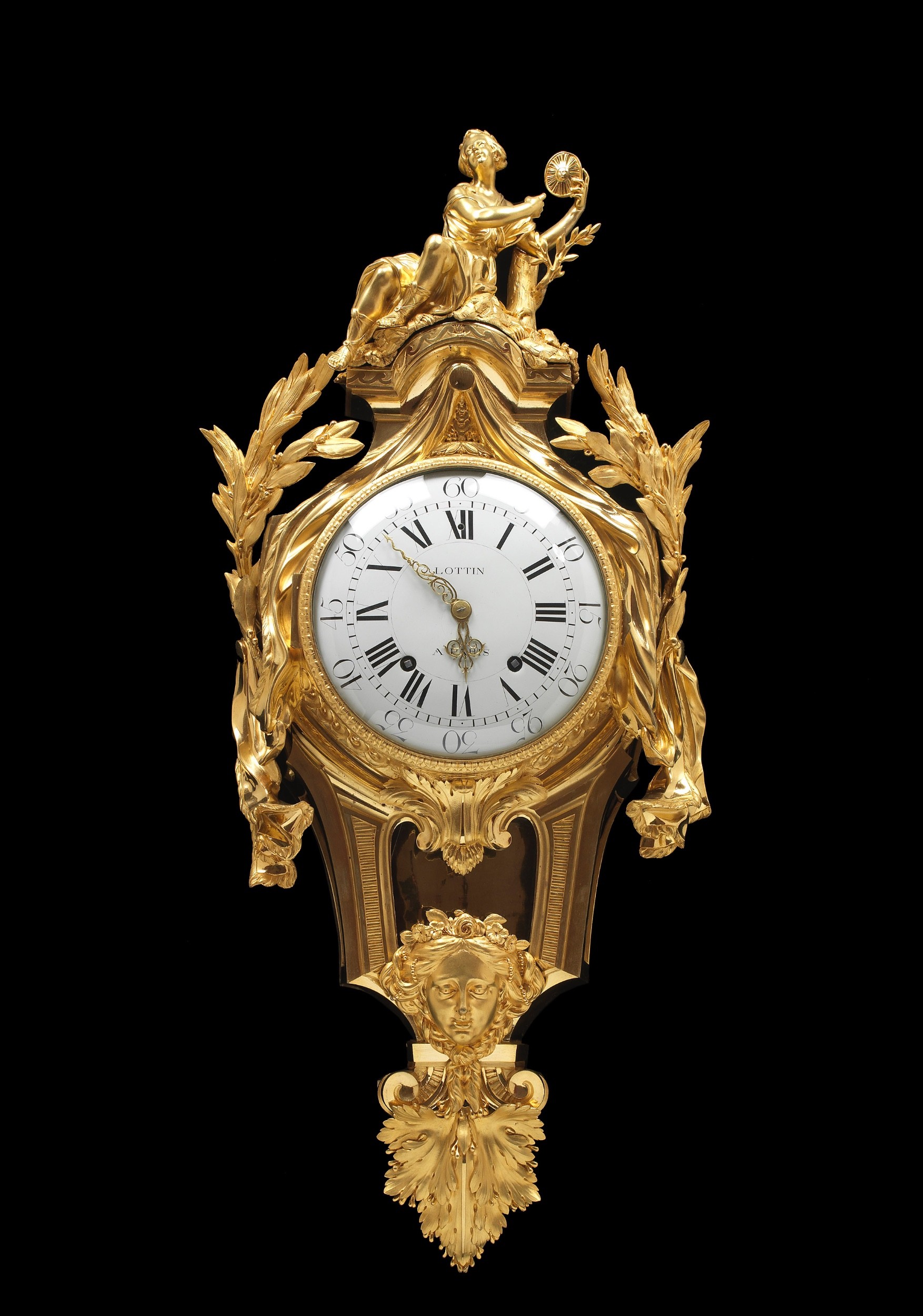
1775
A Louis XVI Cartel Clock By Joseph Lottin. Circa 1775
The lyre shaped gilt bronze clock, with an enamelled dial, is marked Lottin à Paris and is numbered from I to XII in Roman numbers for the hours and from 5 to 60 in Arabic numbers for the minutes. The upper section shaped as a curvilinear entablature, decorated with small waves, is surmounted with a woman, the allegory of Day, sitting on a rock and dressed in Antique-style tunic and sandals. She is crowned with a laurel wreath, and her left arm, leaning against a tree, holds a beaming sun in a medallion. The right arm brings the viewer’s look towards the medallion, symbol of the allegory. Above the dial, below the entablature, is tied a loose drape falling on both sides of the dial, held by decorative gilt pins. The sides also feature lavish laurel and olive-tree branches in bouquet. The lower section features a beautiful woman’s mask, crowned with various flowers and rope-beads, her braided hair is tied under her chin, over two large volutes, above a large flat acanthus leaf with seeds.

Joseph Lottin was made Parisian maître horloger on July 4th, 1771.
Even though we hold little information on his career, it seems that he has employed, for the execution of the clock case, the skills of one of the finest bronziers such as Robert Osmond, whose creations were strongly inspired by the designer Jean-Charles Delafosse.
Measurements
| Dimensions | CM | Inches |
|---|---|---|
| Width: | 44 | 17.3 |
| Depth: | 16.5 | 6.5 |
| Height: | 96 | 38 |